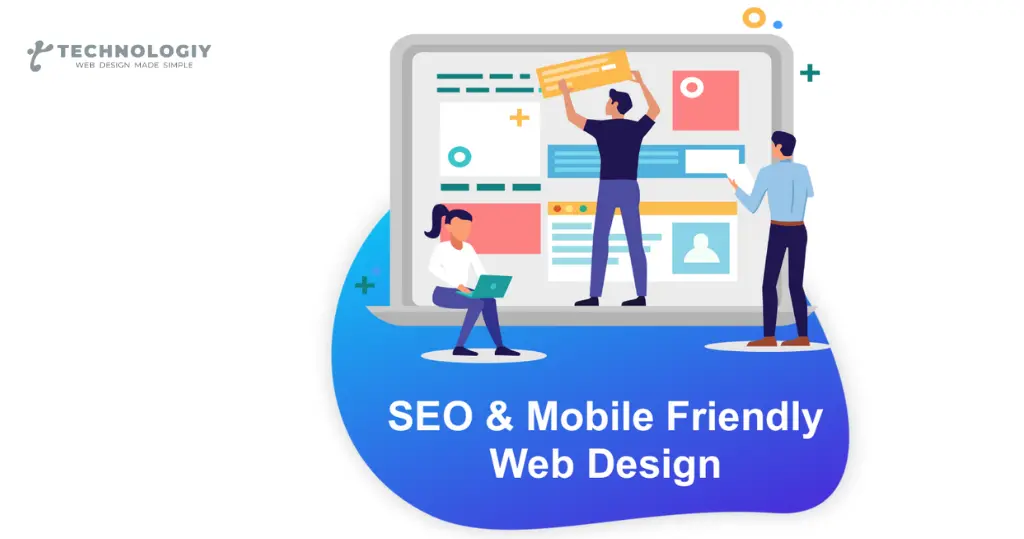Why for SEO-Friendly WordPress Design to Boost Your Online Presence Introduction:
In today’s digital landscape, having a well-designed website is crucial for any business to succeed. One of the most effective ways to ensure your website stands out from the competition and attracts organic traffic is by adopting SEO-friendly WordPress design. In this blog post, we will delve into the reasons why choosing SEO-friendly WordPress design is a smart move for your online presence and business growth.
Enhanced Search Engine Visibility:
With SEO-friendly WordPress design, your website becomes more visible to search engines like Google, Bing, and Yahoo. By optimizing your website’s structure, layout, and content, you increase your chances of ranking higher in search engine result pages (SERPs). This increased visibility leads to greater organic traffic and a higher likelihood of attracting potential customers.
Improved User Experience:
A well-structured and user-friendly website is essential for providing a positive user experience. SEO-friendly WordPress design incorporates responsive layouts, intuitive navigation, and fast-loading pages, ensuring that visitors can easily find what they need. By prioritizing user experience, you reduce bounce rates and increase the time visitors spend on your site, which are key factors considered by search engines when determining search ranking.
Mobile-Friendly Design:
In today’s mobile-dominated era, having a mobile-friendly website is no longer an option; it’s a necessity. SEO-friendly WordPress design ensures that your site is fully optimized for mobile devices, providing a seamless browsing experience across smartphones and tablets. This mobile responsiveness not only enhances user experience but also aligns with Google’s mobile-first indexing, which prioritizes mobile-friendly websites in search results.
Faster Page Load Speeds:
The speed at which a page loads is of utmost importance for both user experience and search engine rankings. People expect websites to load quickly, and search engines reward sites that meet this expectation. SEO-friendly WordPress design focuses on optimizing code, minimizing file sizes, and leveraging caching techniques to ensure your website loads swiftly. A faster website not only improves user experience but also increases your chances of ranking higher in search results.
Content Optimization:
The core of every effective SEO strategy lies in its content. With SEO-friendly WordPress design, you gain access to various tools and plugins that enable you to optimize your content effortlessly. These tools offer features such as keyword analysis, content readability analysis, and meta tag optimization, allowing you to create high-quality, SEO-optimized content that resonates with your target audience and search engines.
Seamless Integration with SEO Plugins:
WordPress offers a wide range of SEO plugins that simplify the optimization process and help you achieve better search engine rankings. SEO-friendly WordPress design ensures seamless integration with popular plugins like Yoast SEO and All in One SEO Pack, allowing you to maximize your website’s visibility and reach.
Optimizing Page Speed for SEO:
The Key to SEO-Friendly WordPress Design In today’s fast-paced digital world, every second counts. Users expect websites to load quickly and seamlessly, and search engines like Google have made page speed a crucial factor in determining search rankings. In fact, studies have shown that a mere one-second delay in page load time can lead to a 7% reduction in conversions!
Choose a Lightweight Theme:
When it comes to WordPress design, selecting a lightweight theme is paramount. Bloated themes with excessive features and complex coding can significantly slow down your website. Option for a minimalist theme that focuses on speed and performance, ensuring a smooth user experience.

Optimize Image Sizes:
Images play a crucial role in engaging visitors and enhancing your website’s aesthetics. However, large image files can be a major culprit in slowing down page load times. To combat this issue, make sure to optimize your images by compressing them without compromising quality. Several plugins are available that can automatically optimize your images upon upload, saving you time and effort.
Utilize Caching:
Caching is a technique that stores a static version of your website, allowing subsequent visits to load faster. By implementing a caching plugin, such as WP Rocket or W3 Total Cache, you can dramatically improve your website’s performance. These plugins generate static HTML files and serve them to visitors, reducing the server load and decreasing page load times.
Minify CSS and JavaScript:
Another effective strategy for optimizing page speed is to minify your CSS and JavaScript files. Minification removes unnecessary characters and white spaces, reducing the file size and improving load times. You can use plugins like Auto optimize or WP Super Minify to automatically minify your files and enhance your website’s performance.
Enable Gzip Compression:
Gzip compression is a method that reduces the size of your website’s files, allowing them to be transferred more quickly over the internet. By enabling Gzip compression, you can significantly reduce the file size of your HTML, CSS, and JavaScript files, resulting in faster page load times. Most caching plugins offer built-in Gzip compression functionality, making it easy to implement.
Optimize Your Database:
Over time, your WordPress database can become bloated with unnecessary data, affecting your website’s performance. Regularly optimizing your database can help improve page load times. Plugins like WP-Optimize or WP-Sweep allow you to clean up your database by removing spam comments, post revisions, and other unnecessary data.
Utilize Content Delivery Networks (CDNs):
Content Delivery Networks (CDNs) are a network of servers located around the world, serving your website’s content to visitors from the server closest to their location. By distributing your website’s files across multiple servers, CDNs can significantly reduce the distance between your website and its visitors, resulting in faster load times. Popular CDNs such as Cloud flare or Max CDN offer easy integration with WordPress websites.
Regularly Update WordPress and Plugins:
Keeping your WordPress core, themes, and plugins up to date is essential for maintaining a fast and secure website. Updates often include performance improvements and bug fixes, ensuring optimal page speed and overall website performance. Set aside time to regularly update your WordPress website to take advantage of these improvements.
User Experience and SEO Rankings:
The Power of SEO-Friendly WordPress DesignWhen it comes to building a successful website, user experience and SEO rankings play a crucial role. With the ever-changing digital landscape, it’s important to stay ahead of the game by incorporating SEO-friendly strategies into your WordPress design. In this blog post, we’ll explore the impact of user experience on SEO rankings and how an SEO-friendly WordPress design can boost your website’s performance.
User experience, commonly referred to as UX, is all about creating a positive and seamless interaction between users and your website. It encompasses various aspects such as website design, navigation, content layout, site speed, and mobile responsiveness. A well-designed website that prioritizes user experience leads to higher engagement, longer visit durations, and increased conversions.
But why is user experience so critical for SEO rankings?
Search engines like Google aim to provide the best possible results for user queries. They heavily rely on signals that indicate user satisfaction, such as click-through rates, bounce rates, and time spent on a website. If users find your website difficult to navigate, slow to load, or unappealing, they are more likely to leave quickly, signaling to search engines that your website does not meet their needs.
This is where an SEO-friendly WordPress design comes into play. WordPress stands out as a widely recognized content management system valued for its adaptability and user-friendliness. By incorporating SEO best practices into your WordPress design, you can enhance your website’s user experience and improve your SEO rankings.
Here are some key strategies to consider when designing an SEO-friendly WordPress website:
Mobile Responsiveness:
With the majority of internet traffic coming from mobile devices, ensuring your website is mobile-friendly is crucial. A responsive design automatically adjusts your website’s layout to fit different screen sizes, providing a seamless experience for users across all devices.
Site Speed Optimization:
Slow loading times can negatively impact user experience and SEO rankings. Optimize your WordPress website by optimizing image sizes, minifying CSS and JavaScript files, and utilizing caching plugins to improve page load speed.
Intuitive Navigation:
A clear and intuitive navigation menu helps users easily find the information they’re looking for. Organize your website’s content logically, using descriptive labels and appropriate hierarchy to guide users through your site.
Engaging Content Layout:
Break up your content into easily scannable sections using headings, subheadings, and bullet points. Incorporate visually appealing elements such as images and videos to enhance engagement and keep users on your website longer.
SEO-Optimized URLs:
Ensure your WordPress website uses SEO-friendly URLs that contain relevant keywords or synonyms. Avoid using long strings of numbers or random characters in your URLs, as they can be difficult for users and search engines to understand.
Meta Tags and Descriptions:
Craft compelling meta titles and descriptions for each page of your website. These snippets are visible in search engine results and can impact click-through rates. Incorporate relevant keywords or synonyms naturally while enticing users to click on your website.
If you’re managing a WordPress website, consider yourself fortunate. WordPress offers a plethora of tools and techniques to help you optimize your page speed and create a SEO-friendly design. In this blog post, we’ll explore some of the most effective strategies to boost your website’s performance and enhance your SEO efforts.
